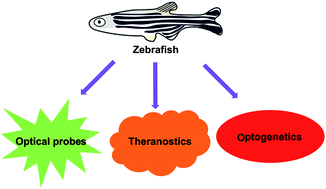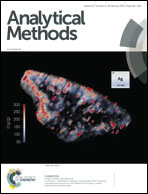Optical probes, theranostics and optogenetics shed light on zebrafish (Danio rerio)
Abstract
Conventional analytical methods concerning synthetic fluorescent probes have been extensively applied in the detection and visualization of biologically relevant chemical species. Recently, with the rapid evolvement of chemical synthesis and nanotechnology, the utilization of fluorescent probes has expanded to fulfill the demands of clinical research such as theranostics for specific diseases. In addition, the successful application of fluorescent probe or light-responsive nanomaterial mediated optogenetics will greatly boost the advancement in physiology and pathology by deciphering the molecular mechanism of a specific physiological or pathological process. Along with the progress of these analytical techniques, zebrafish play a prominent role as a suitable biological platform to validate the functions of certain light relevant analytical techniques. Herein, we summarize the recent development of fluorescent probes and light-responsive nanoparticles, and present their relationship with analyte detection, in vivo imaging, theranostics for diseases as well as optogenetics. Importantly, the indispensable role of zebrafish (Danio rerio) in contributing to the evolution of these techniques is also highlighted. In this review, we survey the importance of zebrafish larvae as a versatile vertebrate model in biological imaging, environmental pollution detection, disease theranostics and optogenetics.

- This article is part of the themed collection: Recent Review Articles


 Please wait while we load your content...
Please wait while we load your content...